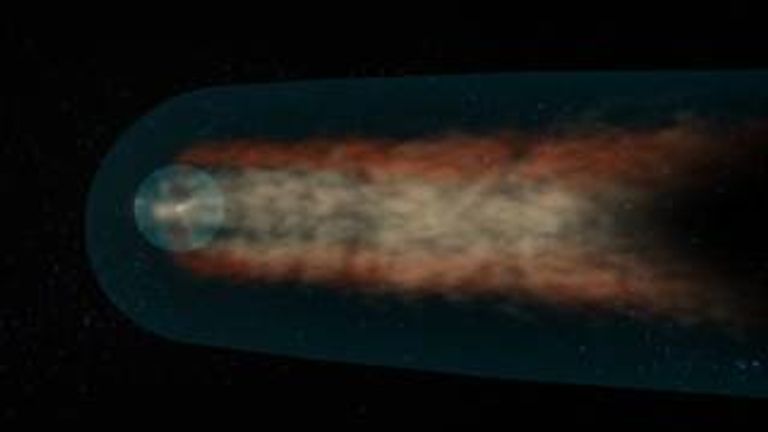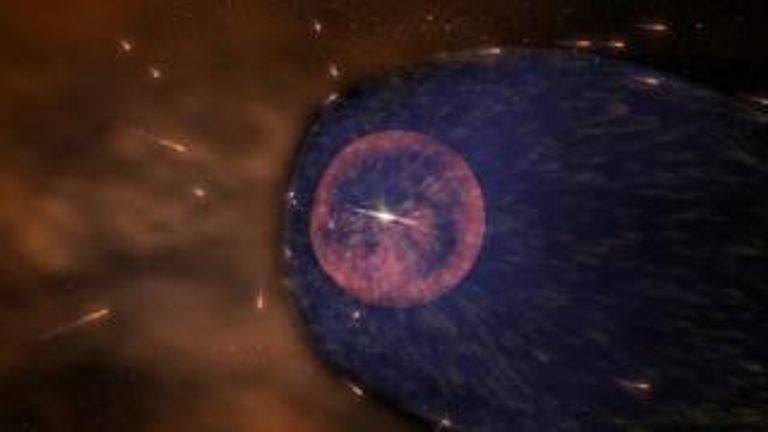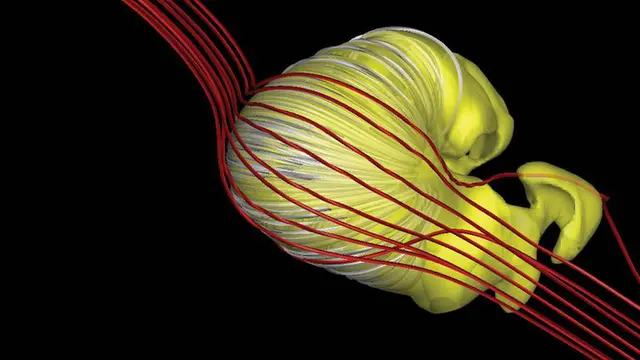NASA has revealed the shape of the bubble surrounding our solar system: a deflated croissant.
Scientists at the US space agency have developed a new prediction of the shape of the heliosphere using a model developed with data from
NASA
missions.
The heliosphere is the vast region around the sun that wraps around all the planets of our solar system.

Image:Previous research suggests the heliosphere has a long tail, much like a comet. Pic: NASA's Scientific Visualisation Studio/Conceptual Imaging Lab
It acts as a shield, protecting the planets from galactic cosmic radiation.
Traditionally, scientists have thought of the heliosphere as a comet shape, with a rounded leading edge, called the nose, and a long tail trailing behind.
But the new research - which draws on data from the Voyager spacecrafts, the Cassini mission to Jupiter, and the New Horizons mission to Jupiter and Pluto - suggests the heliosphere is more a crescent shape than a comet.
Scientists studied particles flying towards Earth, particles trapped in Saturn's magnetic field, particles bouncing back towards the inner solar system, and used NASA missions' data to characterise the behaviour of material in space that fills the bubble of the heliosphere to map its boundary.
The end result was a "deflated croissant" shape.

Image:Our heliosphere blocks many cosmic rays, shown as bright streaks in this animated image, from reaching the planets of our solar system. Pic: NASA's Goddard Space Flight Centre/Conceptual Image Lab
"The heliosphere's shape is also part of the puzzle for seeking out life on other worlds," NASA said.
"The damaging radiation from galactic cosmic rays can render a world uninhabitable, a fate avoided in our solar system because of our strong celestial shield.
"As we learn more about how our heliosphere protects our solar system - and how that protection may have changed throughout the solar system's history - we can look for other star systems that might have similar protection.
"And part of that is the shape: Are our heliospheric lookalikes long-tailed comet shapes, deflated croissants, or something else entirely?"
 简体中文
简体中文

